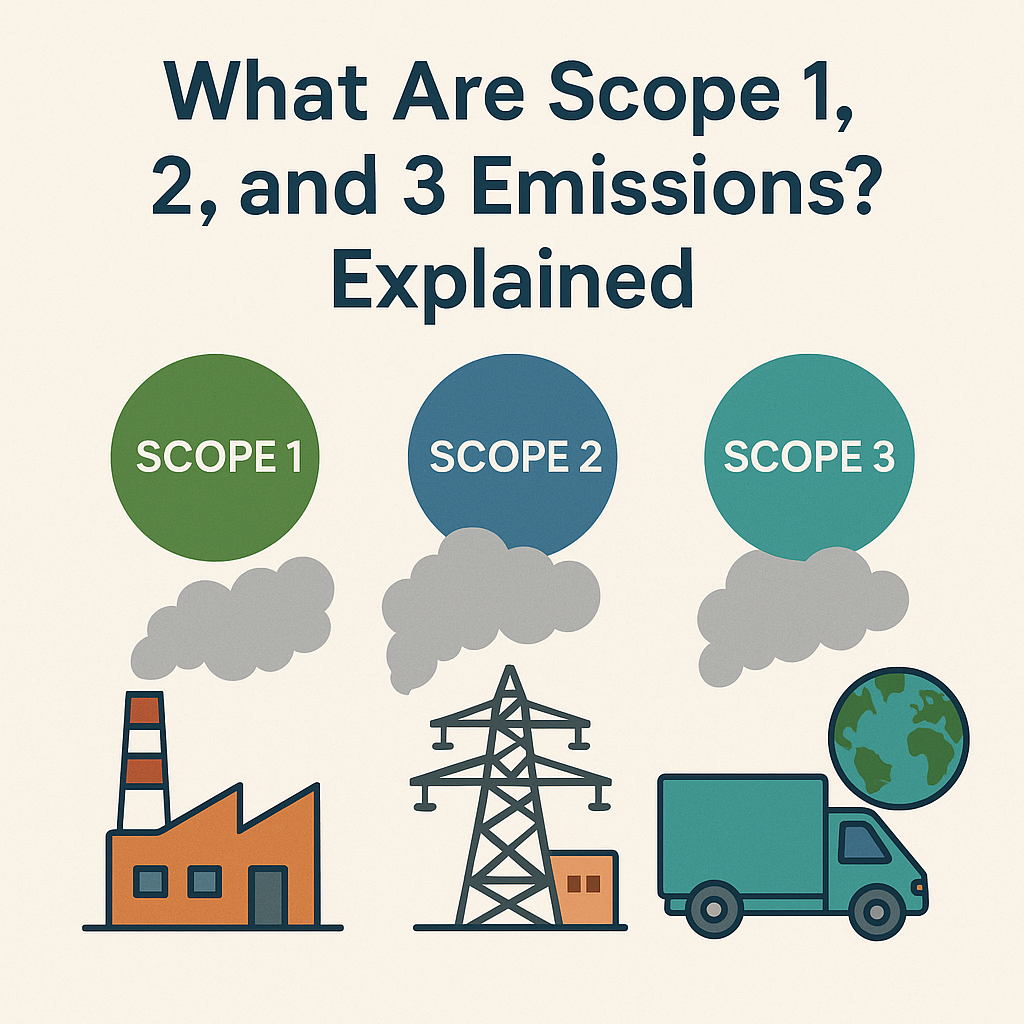Emissions from Fuel and Energy-Related Activities Not Included in Scope 1 or Scope 2 are emissions pertaining to the fuels and energy that a company purchases and uses during the reporting year. While they are not accounted for in Scope 1 (direct emissions) or Scope 2 (indirect emissions from electricity consumption), their impact is undeniable.
The Significance of Fuel and Energy-Related Emissions
Why are fuel and energy-related emissions so important? Consider this: according to the Intergovernmental Panel on Climate Change (IPCC), approximately 73% of global greenhouse gas (GHG) emissions stem from energy-related activities. These activities primarily involve the combustion of fossil fuels for electricity generation, heating, transportation, and industrial processes. What's more, fuel and energy-related emissions are a major contributor to Scope 3 emissions, which encompass all indirect emissions along a company's value chain.
So, if companies aspire to effectively manage their emissions and align with sustainability goals, addressing these fuel and energy-related emissions becomes a paramount responsibility.
Categories within Fuel and Energy-Related Emissions
There are four distinct activities that contribute to fuel and energy-related emissions:
- Upstream emissions of purchased fuels: These emissions encompass the indirect consequences of fuel extraction, production, and transportation related to the fuels a company purchases, but exclude emissions from combustion.
- Upstream emissions of purchased electricity: These emissions are associated with the generation of electricity that a company purchases from the grid. However, they do not include emissions from the combustion of these fuels by the power generator.
- Transmission and distribution losses: These emissions result from the loss of energy during the transmission and distribution of electricity. The process of transmitting electricity over long distances through power lines results in a small amount of energy lost as heat. These losses contribute to emissions associated with the electricity supply chain.
- Generation of purchased electricity that is sold to end users: This category encompasses the emissions associated with the generation of electricity that a company purchases and subsequently sells to end users.
Calculating Upstream Emissions of Purchased Fuels
One critical aspect of Category 3 emissions is the calculation of upstream emissions of purchased fuels. This process involves evaluating emissions associated with the extraction, production, and transportation of fuels used for electricity, steam, heating, and cooling.
Two methods for calculating these emissions are the Supplier-Specific Method and the Average-Data Method.
The first is the Supplier-Specific Method, which entails gathering data directly from electricity providers. This data encompasses a wide range of upstream emissions, encompassing everything from extraction and production to transportation. In essence, it provides a comprehensive picture of the environmental impact tied to the purchased power.
In cases where Supplier-Specific data is either unavailable or not applicable, the alternative is the Average-Data Method. This method relies on estimating emissions by using secondary factors, typically based on industry averages. These averages represent the upstream emissions associated with each unit of consumption. While not as precise as the Supplier-Specific Method, it offers a practical solution for businesses to gauge their environmental footprint when specific supplier data is lacking.
For the supplier-specific method, companies use utility-specific emission factors, while the average-data method employs grid-region, country, or regional emission factors when specific supplier data is unavailable.
Calculating Upstream Emissions of Purchased Electricity
Calculating the upstream emissions of purchased electricity involves evaluating emissions related to the extraction, production, and transportation of fuels used for electricity, steam, heating, and cooling. The two methods available for this calculation are the supplier-specific and average-data approaches.
In both methods, companies must collect specific data on the total quantities of purchased electricity, steam, heating, and cooling, typically measured in megawatt-hours (MWh). Emission factors used in this process should cover the entire life cycle of the energy, excluding combustion emissions.
For the supplier-specific method, utility-specific emission factors are essential, while the average-data method relies on regional or national emission factors if specific supplier data is unavailable. These factors should be representative in terms of time, technology, and geography.
Calculating Emissions from Transmission and Distribution Losses
Transmission and distribution losses are emissions produced when electricity, steam, heating, and cooling are consumed but lost during the process of transmitting and distributing them. Companies have two methods to choose from to calculate these emissions: the Supplier-Specific Method and the Average-Data Method.
The Supplier-Specific Method entails the collection of data from electricity providers, focusing on loss rates within the grids where the reporting company consumes electricity. This method offers a more customised and precise estimation, taking into account the specific grid conditions. It is particularly valuable for those seeking a tailored and accurate assessment of their environmental impact.
On the other hand, the Average-Data Method serves as an alternative when supplier-specific data is either unavailable or inapplicable. In this approach, the estimation relies on using average loss rates for transmission and distribution. These averages can be drawn from national, regional, or global sources, depending on the data that's accessible. While not as individually tailored as the Supplier-Specific Method, it offers a practical solution for assessing environmental impact in cases where specific supplier data is lacking.
Companies should collect specific data on the amount of electricity, steam, heating, and cooling used per unit of consumption, typically measured in megawatt-hours (MWh). Emission factors for this process can be utility-specific loss rates for the supplier-specific method or average loss rates for the average-data method.
Calculating life cycle emissions from power that is purchased and sold
To calculate the environmental impact of power purchased and resold, businesses have two approaches at their disposal. The first method involves obtaining emissions data directly from the power suppliers, and this is known as the supplier-specific method. If such data is not accessible or relevant, companies can opt for the alternative method, known as the average-data approach. In this case, they rely on standard emission rates for the electricity grid.
In order to perform these calculations, companies must gather specific information regarding the amount of electricity they buy and subsequently sell. It's crucial to identify the precise sources, such as the power generation units, from which the purchased electricity originates. Moreover, it is essential to acquire emission factors for carbon dioxide (CO2), methane (CH4), and nitrous oxide (N2O). These factors are vital in determining the quantity of greenhouse gas emissions generated during the production of the purchased electricity.



